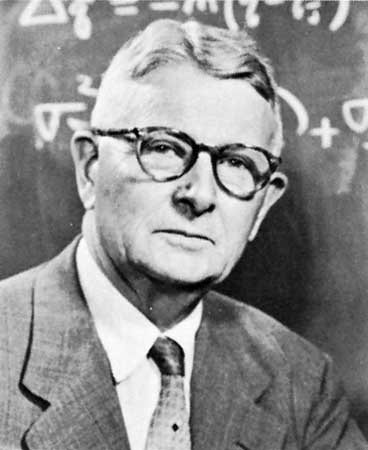Wright, Sewall
American geneticist
born Dec. 21, 1889, Melrose, Mass., U.S.
died March 3, 1988, Madison, Wis.
 American geneticist, one of the founders of population genetics. He was the brother of the political scientist Quincy Wright.
American geneticist, one of the founders of population genetics. He was the brother of the political scientist Quincy Wright.Wright was educated at Lombard College, Galesburg, Ill., and at the University of Illinois, Urbana, and, after earning his doctorate in zoology at Harvard University (Sc.D., 1915), he worked as a senior animal husbandman for the U.S. Department of Agriculture (1915–25). He was a professor at the University of Chicago (1926–54) and then at the University of Wisconsin, Madison (1955–60). He continued to publish scientific papers after his retirement.
Wright's earliest studies included investigation of the effects of inbreeding and crossbreeding among guinea pigs, animals that he later used in studying the effects of gene action on coat and eye colour, among other inherited characters. Along with the British scientists J.B.S. Haldane and R.A. Fisher, Wright was one of the scientists who developed a mathematical basis for modern evolutionary theory, using statistical techniques toward this end. He also originated a theory that could guide the use of inbreeding and crossbreeding in the improvement of livestock. Wright is perhaps best known for his concept of genetic drift, called the Sewall Wright effect, which says that when small populations of a species are isolated, out of pure chance the few individuals who carry certain relatively rare genes may fail to transmit them. The genes may therefore disappear and their loss may lead to the emergence of new species, although natural selection has played no part in the process.
- Booth, William Bramwell
- bootlegging
- Bophuthatswana
- Bopolu
- Boppard
- Bopp, Franz
- Bor
- bora
- Bora-Bora
- boracite
- borage
- Boraginaceae
- Borah Peak
- Borah, William E.
- borane
- borate mineral
- Borate minerals
- borax
- Borba
- Borcherds, Richard Ewen
- Borchert, Wolfgang
- Bordaberry Arocena, Juan María
- Borda, Jean-Charles de
- Bordeaux
- Bordeaux I, II, and III, Universities of